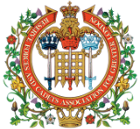 The Special Reserve
The Special Reserve
Richard Haldane's Reserve Forces Act of 1907 was intended to provide a well-trained reserve for the Regular Army that was capable of providing individual reinforcements or drafts at short notice as well as an efficient and cost effective Home Defence organisation.
Before the introduction of the Reserve Forces Act, Home Defence was the responsibility of the Volunteer Battalions and the Yeomanry and the Reinforcement of the Regular Army was the responsibility of the Militia.
Although each Militia Regiment was allied to a Regular Unit, as with the Volunteers the association was fairly loose and not entirely under the control of the War Office. Hence the training and administration of both left much to be desired.
Reserve Forces Act 1907
Haldane's Act would see the Yeomanry and Volunteers merged to form a new Home Defence organisation known as The Territorial Force and the Militia Regiments re-emerge as the Special Reserve.
The Army Council at the War Office had for years been critical of the training standards and efficiency of Militia. However, the Regular Army had for centuries relied heavily on the Militia Regiments as providers of individual reinforcement and draft finders in time of need as well as a steady source of recruits.
Whilst the creation of the Territorial Force involved much reorganisation and administration, including a considerable building programme, the conversion of the Militia to the Special Reserve proved a much more straightforward task as most of the Militia Barracks were already in place and would serve just as well for the Special Reserve.
The Special Reserve
This new organisation would have a similar role to the Militia; the big difference being that it would form the 3rd and 4th Battalions of a Regular infantry Regiment and in most cases would keep their original Militia title. Thus, the Royal Elthorne Militia stationed at Uxbridge would become the 3rd (Reserve) Battalion, The Duke of Cambridge's Own (Middlesex Regiment) (Elthorne Militia). Other arms of service would add Special Reserve Formations in a similar way.
The Special Reservist
The recruit would be obliged to serve for a period of six years. During that time he would first complete six months continuous training at a Militia Barracks. These barracks were spread throughout the UK either as stand-alone, such as Barnet, or beside a Regular Army depot such as at Kingston in Surrey. By the outbreak of the WW1, most Special Reserve Battalions had moved out of Militia Barracks and into Regimental depots.
Having completed six months initial training, the Reservist would return to civilian life with an obligation of 28 days continuous training every year.
Personal weapons and equipment would eventually be brought up to the same standard as colleagues in the Regular Army and he would receive regular rates of pay. All this came with the obligation of mobilisation at any time within period of engagement. His Regimental number would be prefixed by the letters ‘SR' for Special Reserve. However, like his counterpart in the Territorial Force, members of the Special Reserve remained essentially civilians.
The First World War
The Special Reserve Battalions were never intended to be mobilised as a fighting formation, but simply to provide trained drafts to their Regular Battalions in the event of a national emergency. In August 1914, the Special Reserve Battalions were made up to strength with an influx of Regular Army Reservists. From the outbreak of war until the end of 1915, these Battalions provided a steady flow of reinforcement drafts to their Regular Battalions, a task that eventually bled them dry of men. Thereafter the Special Reserve Battalions became training units for the new Kitchener Armies.
Disbandment
The Special Reserve Battalions were not reformed after WW1 and were eventually disbanded in 1921.
The Special Reserve more than fulfilled the role envisaged by Haldane in his reorganisation of the Reserves in 1908.
